Eastern Turkey is a wild and rugged region with a long, tempestuous history and a rich cultural heritage. The region boasts some of Turkey’s most spectacular nature and treasured historical monuments, as well as some of the most friendly and hospitable people. My two-week tour of eastern Turkey turned out to be one of the most extraordinary trips I’ve ever experienced!

About Eastern Turkey
Eastern Turkey is the region in Eastern Anatolia (Asia Minor) that borders Georgia, Armenia, Iran, Iraq and Syria. It is a fascinating part of Turkey with an impressive history. The southeastern corner of this region, where the mighty Tigris and Euphrates rivers flow, is where Mesopotamia rose and is now known as the cradle of modern civilisation. Eastern Turkey also has some of the country’s most outstanding scenery, with its impressive snow-capped mountains, massive lakes, gushing rivers and immense fields of wildflowers (the Dutch would be interested to know that tulips originated from the mountains of eastern Turkey – you can find them growing wild in many places).
Note: Some of the places in the second half of this route such as Diyarbakir and Gaziantep suffered great devastation during the massive earthquake that occurred on 6th February 2023.
Places and towns to visit in Eastern Turkey
View Eastern Turkey in a larger map
Erzurum: the start of this Eastern Turkey road trip
This suggested road trip itinerary through Eastern Turkey starts in Erzurum, which can easily be reached by plane from Istanbul. Erzurum is located at the edge of a basin surrounded by snow-capped peaks. Though the city can trace its existence back to ancient times, little remains of its medieval past. The most prominent historical landmarks are the citadel and the beautiful Çifte Minareli Medrese (religious school) that dates back to the 13th century. I also recommend a visit to one of the most interesting cafés I’ve ever visited: the wonderfully quaint Erzurum Evleri, a traditional Erzurum house where visitors sit on heaps of carpets and cushions to enjoy a cup of strong Turkish tea or coffee and sweets. Search for hotels in Erzurum (Booking.com).
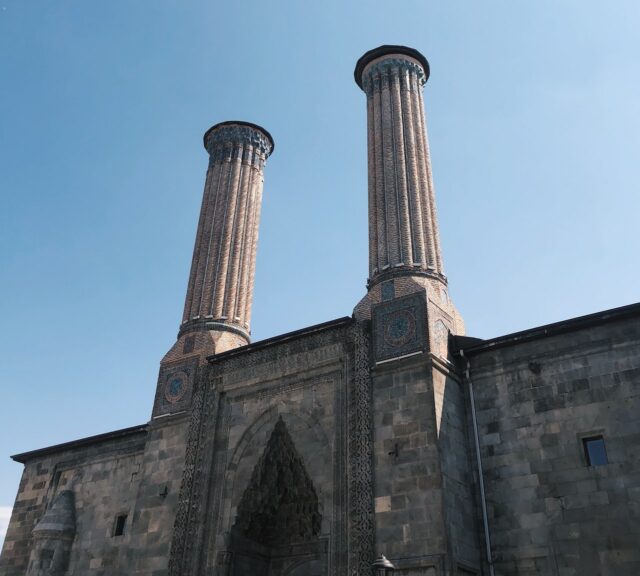
The ancient town of Ani
From Erzurum, head eastwards to Kars, a small town near the Armenian border. From here, continue to Ani, a magnificent historical site. Built on the edge of a dramatic gorge (which now forms the border between Turkey and Armenia), Ani was a major Armenian trading post that straddled the Silk Road. At its peak, it is estimated that there were 5,000 churches in the city. Today, the mighty walls as well as various churches (some of which have breathtaking frescoes), mosques and bridges can still be seen. Search for hotels in Kars (Booking.com).

The Eastern Turkey tour continues from Kars to Dogubeyazit. Enjoy the stunning mountain scenery and rustic villages (notice how villagers have their beds on the roofs of their house!).
Dogubeyazit is a small provincial town with two of the major highlights of this trip: the awe-inspiring Mount Ararat and the equally breathtaking Ishak Pasha palace. The palace is built on the edge of a hill overlooking Dogubeyazit and an immense plain. The palace, built in the 17th century, is one of the most magnificent and lavish examples of Ottoman architecture. The elaborate stonecarvings on the portals and walls are exquisite.
Search for hotels in Dogubeyazit (Booking.com).

Mount Ararat and Noah’s Ark
Mount Ararat, at 5,137 meters, is Turkey’s highest peak and a main attraction in Eastern Turkey. The snow-capped mountain is actually a dormant volcano and is best known as the Biblical place where Noah landed his ark after the great flood.

Experts from around the world continue to search for physical remains of the ark to this day. One of the most approachable sites is the Durupinar site, near the village of Uzengili (on the trunk road to the Iranian border, look for the Nuhun Gemisi exit). Discovered in the 1950’s, the site is located not on Mt. Ararat itself but on a mountainside opposite Mount Ararat and features a boat-like formation which may very well be a natural phenomenon. From Uzengili, a dirt road winds itself up to the site. Even if you doubt the authenticity of the remains, the views from the site of Mt. Ararat and Little Ararat (3,896 meters) are truly staggering, and are worth the effort of the trip.

Lake Van and Akdamar Island
From Dogubeyazit, head southwest towards Lake Van. On the way, you can make a short stop at the elegant cascades of the Muradiye waterfall. Lake Van is Turkey’s largest lake and is a stunning sight, with its soda-rich, turquoise-white water contrasting sharply with the majestic snow-capped mountains that surround it.
Van is a bustling town with a variety of industries, including a noteworthy carpet-making industry. Just outside the town is one of its biggest attractions: the Van Citadel. Believed to have been built in the 7th century AD, the citadel is situated on a steep cliff overlooking the lake. Another nearby attraction is Akdamar Island, in Lake Van. The boat trip to the island is the perfect way to enjoy the amazing vistas of the lake and the mountains. On the island itself is a revered Armenian monument, the Church of the Holy Cross. The church, built in the 10th century AD using pink sandstone, is most famous for the rich bas-reliefs (depicting biblical scenes) that adorn its façade.
Search for hotels in Van (Booking.com).
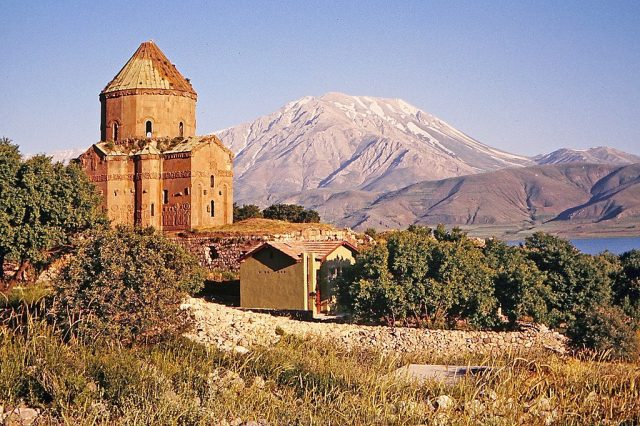

Hasankeyf – ancient city on the Tigris
Continue on the route from Van to Hasankeyf. The road winds itself around the shores of Lake Van, offering awe-inspiring panoramas of the lake, before heading inland through the mountains. Hasankeyf is an ancient city, on the banks of the mighty Tigris river, with a history that goes back more than a thousand years.

This city is indeed breathtaking. Seemingly carved out from the cliffs along the river, the city now lays in ruins but it isn’t difficult to imagine that this was once a place of great beauty and awe. There are plans to build a dam nearby which would submerge the remains of the city. As a consequence, the Hasankeyf has been placed on the World Monuments Fund’s Watchlist of 100 most endangered sites in the world.
The walled city of Diyarbakir
From Hasankeyf, head to the magnificent walled city of Diyarbakir. The drive to Diyarbakir takes you through the expansive fertile plains of what was once Mesopotamia. Diyarbakir, located on the shores of the Tigris, is another highlight of this trip. The city’s imposing basalt walls (built during the Roman times) and stunning towers are still largely intact and offer super-picturesque views of the ancient city centre, the Tigris and the surrounding plain.
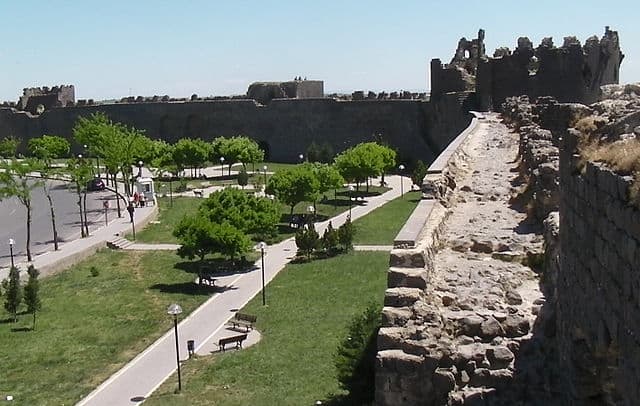
The atmosphere in the city is extraordinary: the scent of spices fill the air while horse-drawn carts filled with hay, fruits and vegetables rumble down the streets. It is an atmosphere that is in many senses reminiscent of the Middle Ages. There is a bustling bazaar, centuries-old mosques (look for the beautiful Ulu Cami and Safa mosques) and churches (including the very first church built in the 1st century that was solely devoted to the Virgin Mary, and the atmospheric Mar Petyun and Surp Giragos churches) and the lovely caravanseray. Everywhere you go, you’ll notice exquisite stonecarvings on the city’s walls and buildings, rich inscriptions and graceful stone arches.
Search for hotels in Diyarbakir (Booking.com).
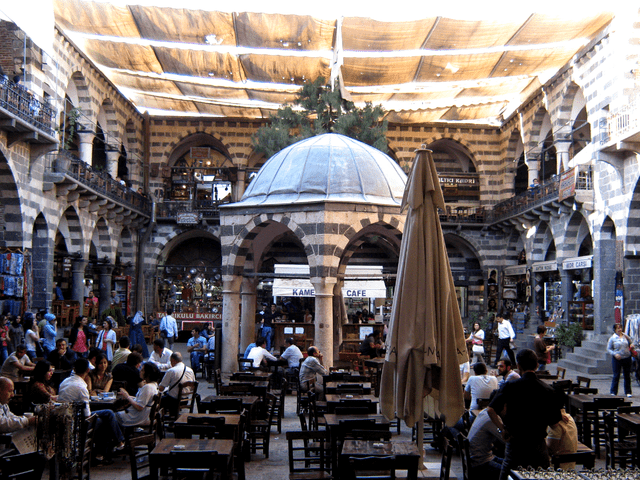
Mardin – the hilltop town near the border with Syria
After spending a few days in Diyarbakir, head southeast to Mardin. This beautiful town is perched on a mountaintop and commands magnificent views of the immense plain below which stretches deep into Syria. The town is filled with narrow pedestrian-only streets – in fact, the only form of transport in the town centre is by mules, which carry everything from groceries to garbage! Take some time for a leisurely stroll around the narrow, shady streets and stop for a chat and tea with some of the friendliest people around.

Sanli Urfa – the birthplace of Prophet Abraham
From Mardin, head in a westerly direction to Sanli Urfa (or just Urfa). Urfa is an important town and a major pilgrimage site as it was here that the prophet Abraham was born. The prophet’s birthplace (a sacred cave) is now surrounded by a beautiful complex of mosques, ornamental ponds and canals, and parks.

Apart from the cave, the biggest attraction in the complex are the sacred carps in the ponds. These are some huge fish! High above the complex is the magnificent citadel which is floodlit at night. Urfa is also famous for its giant bazaar, a massive maze of narrow streets and lively squares. A walk through the bazaar is indeed a memorable experience.
Search for hotels in Sanli Urfa (Booking.com).
Harran – beehive houses and the Bible
South of Urfa, close to the border with Syria, is the extraordinary village of Harran. Harran is an ancient site that has earned many mentions in the Bible. One of them is that this is where Adam and Eve came to after they were expelled from the Garden of Eden. Nowadays, Harran is most famous for its ruins and for its beehive houses.

The statues of Nemrud Dagi National Park
From Urfa, proceed north back into the mountains towards the Nemrud Dagi National Park, a UNESCO World Heritage site. The route takes you past the massive Ataturk Dam, the town of Adiyaman and through the mountains, past some picturesque valleys and a spectacular gorge to Karadut.

From here, continue up to Nemrud Dagi. This site is probably the highlight of the trip. In the 1st century BC, King Antiochus built a tomb-like monument for himself atop the 2,134 meter high Mount Nemrud. He actually added a further 50 meters to the height of the mountain by constructing a mound or tumulus on the peak!
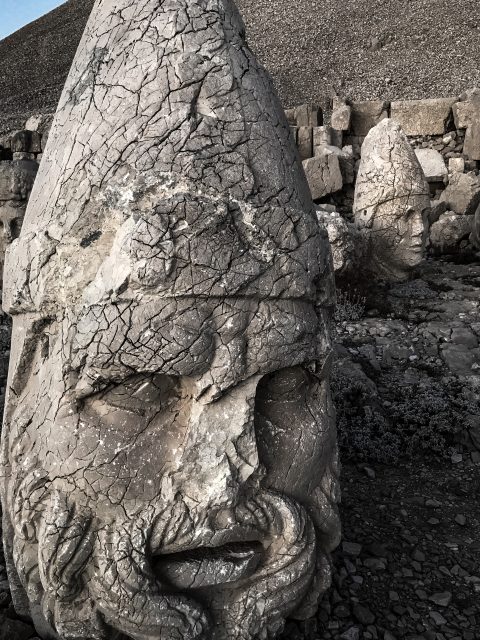
Flanking this tumulus are giant statues of himself (in their original upright state, they would have been eight to nine meters tall), lions, eagles and various gods. Visiting this site involves a rather strenuous climb of a few hundred meters so be prepared. Once at the top, you’ll be rewarded with the sight of the giant statues and the breathtaking panorama of the adjacent mountains, valleys and the Ataturk dam-lake.
Gaziantep – the city of baklava
From Nemrud Dagi, the journey continues to Gaziantep, the largest city in the southeastern Anatolian region. Gaziantep is an important agricultural and industrial centre, and is famous for its copperware, pistachio nuts and baklava (a rich, sugary Turkish pastry). In the city centre, you’ll find the Gaziantep Fortress and the Ravanda citadel. Don’t miss the Archaeological Museum which houses a series of impressive Roman mosaics.
Search for hotels in Gaziantep (Booking.com).

This tour of eastern Turkey ends in Adana, which lies west of Gaziantep. From here, you can opt to fly to Istanbul or to other parts of Turkey. After this trip, you might want to spend a few days simply lounging on one of Turkey’s stunning beaches!
How to explore Eastern Turkey
The ideal way to explore Eastern Turkey is by means of an organised tour. However, it is possible to explore the region individually by means of public transport or with a rental car. Please ensure you’re well informed about the security situation in the region, especially in the areas near the border with Syria. The suggested itinerary above starts in Erzurum and ends in Adana. There are frequent flight connections between these two cities with Istanbul. I strongly recommend making this trip in spring or early-summer when temperatures are more comfortable. Eastern Turkey has a continental climate and often experiences temperatures of -30 degrees Celsius in the winter.



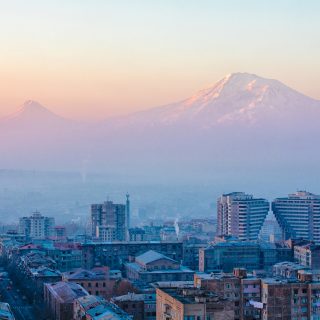
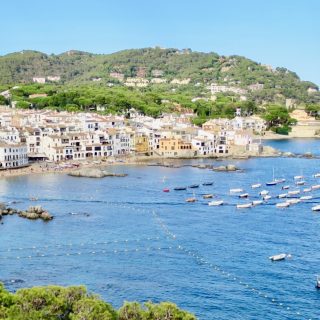
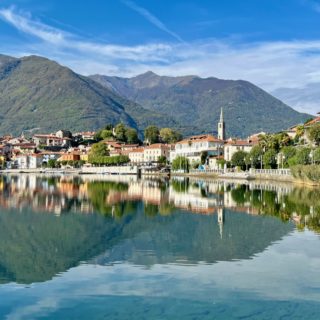
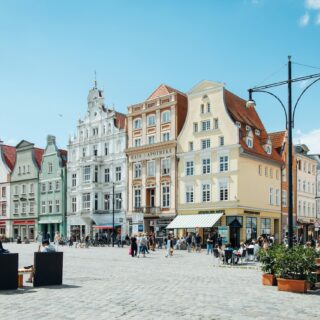






Hi Alex,
I travelled with a small group + guide in a van.
Cheers,
Keith
Hi! Amazing article. Did you travel by car or bus public transport?
[…] Mount Nemrut is a stunning UNESCO World Heritage in eastern Turkey. In the 1st century BC, King Antiochus built a tomb-like monument for himself atop the 2,150 meter-high mountain. He actually added a further 50 meters to the height of the mountain by constructing a mound or tumulus on the peak! From afar, this artificial peak is unmistakable – an incredible engineering marvel. Flanking this tumulus are giant statues of himself (in their original upright state, they would have been eight to nine meters tall), lions, eagles and various gods. The parts of the statues and the busts are now scattered throughout the site but they are nonetheless impressive. Read about a tour of Eastern Turkey. […]
[…] The incredible statues of Mount Nemrud or Nemrut (Nemrud Dagi in Turkish) are located at the top of the 2,134 meter peak of Mount Nemrud (map), near the city of Adiyaman in Southeastern Turkey. This stunning UNESCO World Heritage site is one of the highlights of a trip to Eastern Turkey. […]
[…] A tour of Eastern Turkey […]
Hello Gail,
Thanks for getting in touch. I’m afraid I can’t be of any help as I do not have any contacts there.
Good luck with your search and have a safe trip!
Cheers,
Keith
Hi
A small group ( possibly 6???) of us wish to visit East Turkey…say a 7-10 days…could you recommend a company for us please….ideas etc, Will be either pre or post Egypt, Jordan and Isreal tour with a larger group…..many thanks. I personally have done West Turkey last year, was okay but looking to do less touristy and a unique tour….around August 2020/Many thanks for help….and suggested company.
This is a great itinerary for those looking to explore Turkey beyond the obvious destinations. Even these days, when people are hesitant to discover that part of the country, it is worth looking into the options of visiting the area.
Hello Anita,
It’s hard for me to advise as I was there some years ago and the route you described is only partially familiar to me. I would contact the Turkey Tourism Board for their recommendations: http://www.goturkey.com/
Have a safe and enjoyable trip!
Best regards,
Keith
hi, velvet,
thank you for sharing such an amazing experience. i am going to visit van on may 13.
i do have a question for you if you can help me. distance wise, i think it is more efficient to visit hasankeyf first, then go to mardin, from mardin to diyarbakif. then from diyarbakir to siverek and take the ferry to kahta.
please advice if you think this route is doable.
much appreciated.
anita
Thanks for the itinerary. Its very useful getting an idea of where to start. I am going to Turkey in August and will be following your itinerary.
beautiful pics and very interesting articles Keith. thanx! Didn’t know Turkey so much… such a rich history!! Rob
Thanks for your comment. I really enjoyed my trip through Eastern Turkey. It’s such a unique region, steeped in history and with the most stunning scenery.
Cheers,
Keith
Incredible blog on eastern Turkey! Makes me want to return after touring north, western & central parts of the country. It was magnificent & enchanting. How/why on earth did I manage to miss all of the splendor of the east? Must return… Many thanks for sharing an amazing post! It’s an inspiring piece not only on Turkey but on traveling, too.
Hi Peter,
The roads are fine. The trip I did took about 2 weeks and that was sufficient to see the region and enjoy its beauty.
Cheers,
Keith
Hello,
I’ve been fascinated by your blog as I’m due to travel through Eastern Turkey in November. But can I ask, how long did your trip take you?
A friend and I are driving from Van to Cappodoccia over 2 weeks. How are the roads/driving there? Is two weeks too short a time?
Thanks in advance for your advice, and good luck with all your future trips
Peter x
Eastern Turkey is an often overlooked part of the world, but its got some of the most incredible history and landscapes. Thanks for sharing, the list just keeps on growing! 😉
[…] https://velvetescape.com/blog/2010/11/a-tour-of-eastern-turkey/ This entry was posted in Turkey. Bookmark the permalink. […]
Velvet, Thanks for sharing. Turkey is home to many historical monuments, statues, pyramids and much more. There are many interesting places to explore in Turkey.
Thank you for sharing.Turkey is an amazing country. Thank you for sharing, there is a really useful info in here. I travel a lot from England to Turkey work related. I’ve only been to Istanbul so far but I’m planning to go on a vacation soon enough. It’s a very diverse and interesting city.Speaking of travel tips- the only thing I don’t like about it is that I often have last minute online bookings problems.Therefore now I call to confirm my reservation beforehand. So if you need to call Turkey I’d recommend using a call service because skype doesn’t always work and international calls are too pricey. And be careful for the ‘nazar boncuk’ or ‘evil eye’ 🙂
Lisa
Bookmarked as I want to visit Eastern Turkey one day. Thanks for this list. Eastern Turkey is definitely off the beaten track. Don’t know whether this is a good thing or bad. 1 – It has not succumbed to the tourism madness like other places in Turkey 2 – Many people are missing out on true Turkey. They see resorts like Marmaris and bodrum and assume this is proper Turkey, it is not.
Astounding…! I always like the historical monuments; these are one of the best and a rich cultural heritage & the pictures are amazing thanks to introduce such an enormous place.
There is just so much to explore in Turkey! When I was there last summer, I went to Istanbul and Cappodocia, but I wish I could have seen more…
My gosh it looks insanely amazing!!!
Thank you Adam for your kind comment. Eastern Turkey is absolutely Turkey-off-the-beaten-path and I highly recommend it. Thrilled that I managed to inspire someone to maybe visit Turkey one day! 🙂
Cheers,
Keith
Wow, unbelievable post. Turkey is at or near the very top of our list of places we want to go, SOON, and this post just proves why. I am learning more and more about this country, and I don’t see how it’s going to be possible to only stay in Turkey for a short period of time. Great job getting someone who has never been very excited to one day go!
Thanks for your comment David. I can absolutely recommend Turkey. Istanbul will totally bowl you over but wait till you see Anatolia. Like… WOW!
Cheers,
Keith
Wow, simply amazing Keith. It has always been my dream destination to visit Turkey as they have so much history and culture to offer. Thanks for sharing this and I hope to make a visit to Turkey within the next few years.
David
Haha! I know what you mean! I visited the place in the middle of a thunderstorm. We rushed for cover in a nearby shed and when I ventured out while it was still raining, there was no one there. I was soaked but the dramatic effect of the rain, hailstones and thunder was unforgettable!
Cheers,
Keith
Oh gosh, those giant statues are amazing… and these are ruins; imagine the original statues in their full splendour and glory! Wow-ness.